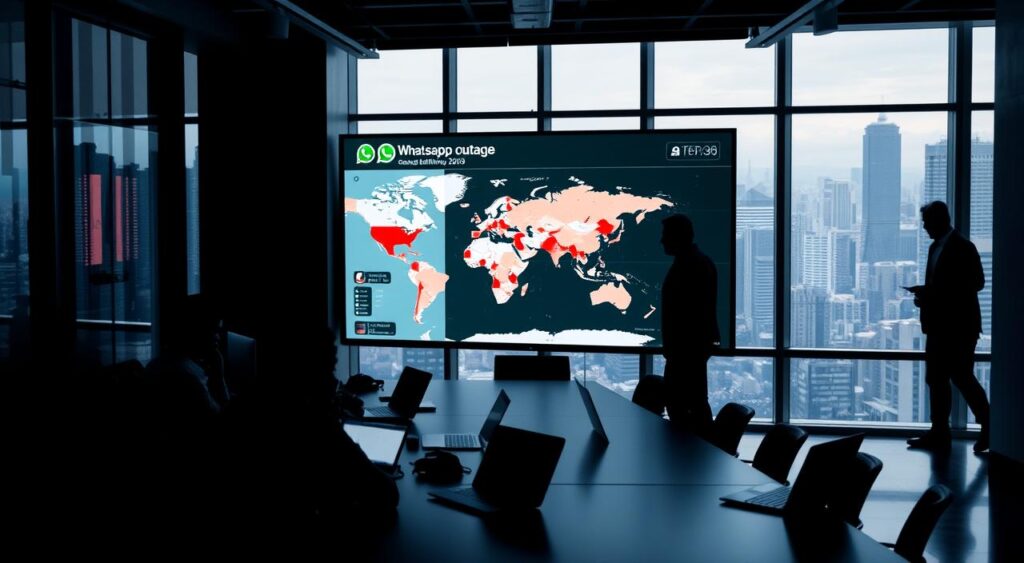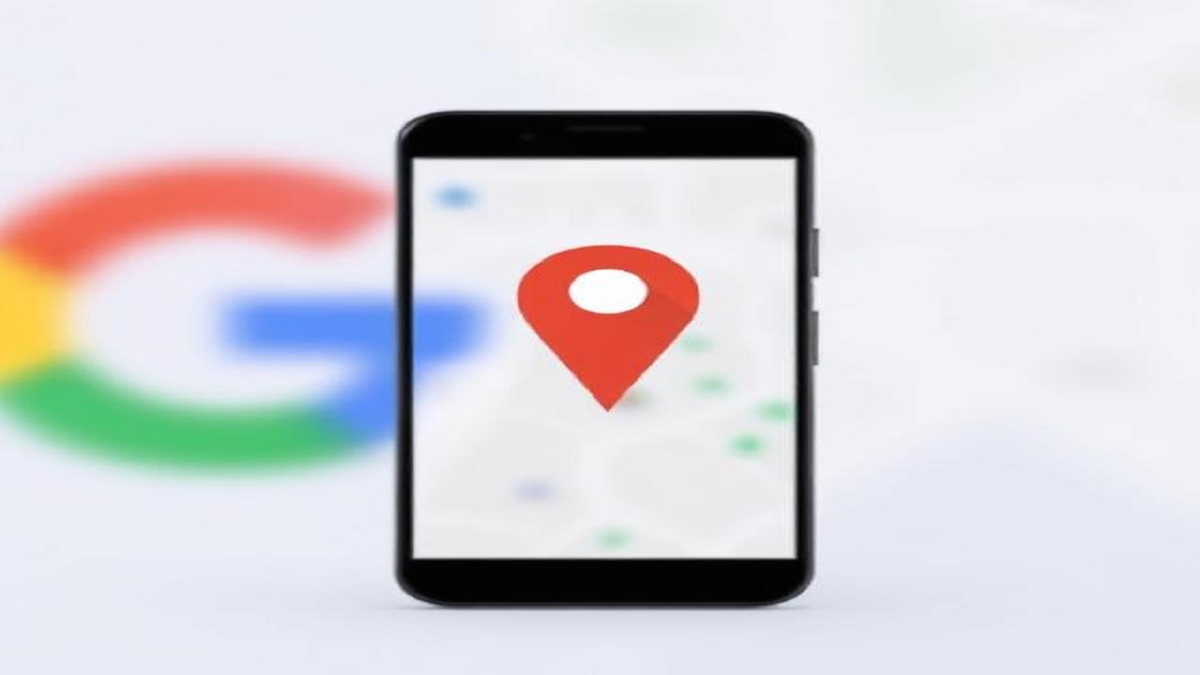Recently, users worldwide faced a big disruption in a very popular messaging app. This left many wondering what caused it and what it means.
This article will give you a full view of the recent WhatsApp issue. We’ll look at what happened, why it might have happened, and what it means for users. By diving into the details, we can understand more about keeping such a key communication tool running smoothly.
Key Takeaways
- Understanding the cause of the recent messaging app disruption
- Exploring the impact on global communication
- Discussing measures to prevent similar issues in the future
- Analyzing the response from the messaging app’s developers
- Considering the implications for users and businesses reliant on the platform
The Recent WhatsApp Outage Explained
The recent WhatsApp outage left millions of users worldwide in a digital limbo. It sparked concern and curiosity. WhatsApp is one of the most used messaging apps globally.
Timeline of the Service Disruption
Knowing when the outage happened is key. It started on [date] at [time] and lasted for about [duration].
Initial Reports and Confirmation
First reports of the outage came on social media. Users were frustrated and confused. WhatsApp’s parent company, Meta, soon said they were having technical problems.
They promised to fix it quickly. Official statements were out within hours.
Duration and Resolution Points
The outage lasted for [duration]. WhatsApp’s team fixed it and made sure it won’t happen again. They found and fixed the main problem.
Geographic Scope and User Impact Statistics
The outage hit users all over the world. It affected people in many countries and time zones.
Most Affected Regions
Some places felt the outage more than others. North America and Europe had a lot of complaints. This shows how much people rely on WhatsApp there.
Number of Users Impacted Globally
Reports say over [number] million users were hit by the outage. This big number shows how many people use WhatsApp. The outage caused a lot of lost work and money, especially for businesses.
WhatsApp’s Infrastructure and Vulnerability Points
The recent WhatsApp outage has raised questions about its technical architecture and potential vulnerabilities. Understanding these elements is crucial for grasping the WhatsApp issue and its impact on users worldwide.
Technical Architecture Overview
WhatsApp’s technical architecture supports a massive user base. It has a complex system for message delivery, data storage, and user connectivity. At its core, WhatsApp relies on a distributed server architecture.
Server Distribution Systems
WhatsApp uses a sophisticated server distribution system. This system manages the load across different geographic regions. It ensures user data is processed efficiently and messages are delivered promptly.
The servers are distributed across various data centers. This enhances the platform’s resilience and scalability.
Message Delivery Protocols
The message delivery protocols used by WhatsApp are critical. These protocols ensure messages are transmitted securely and reliably. WhatsApp uses end-to-end encryption for all messages, making it secure for personal and business communications.
Meta’s Integration with WhatsApp Systems
Meta’s integration with WhatsApp systems has been a subject of interest. This integration concerns the sharing of resources and dependencies between platforms. It can potentially introduce vulnerability points in the system.
Shared Resources and Dependencies
The integration between WhatsApp and Meta’s other platforms involves shared resources and dependencies. While this integration can enhance functionality and user experience, it also means issues in one platform can affect others. This contributes to a larger WhatsApp problem.
Potential Weak Points in the System
Identifying potential weak points in WhatsApp’s infrastructure is crucial for preventing future outages. These weak points can arise from various factors, including system complexity, user activity scale, and shared resource reliance. Addressing these vulnerabilities is key to ensuring the reliability and security of the platform. This helps mitigate the risk of another significant WhatsApp error.
Root Causes of the WhatsApp Outage
Looking into the WhatsApp outage shows many technical problems. These issues are key to avoiding future problems.
Technical Failures Identified
Several technical failures caused the WhatsApp outage. These can be broken down into server problems and network setup issues.
Server-Side Issues
Server problems were a big part of the outage. Too much traffic on the servers was a main cause. WhatsApp’s system was not ready for the sudden increase in users.
Experts say server problems come from many sources. This includes hardware failures, software bugs, and not planning for enough users. This shows how hard it is to keep big messaging services running.
Network Configuration Problems
Network setup issues also caused problems. Wrong settings can make it hard for users to connect. Bad firewall rules or wrong DNS settings are examples.
| Issue | Description | Impact |
|---|---|---|
| Server Overload | Unexpected traffic surge | Service unavailability |
| Network Misconfiguration | Incorrect firewall rules or DNS issues | Connection difficulties |
Meta’s Official Explanation and Analysis
Meta’s explanation for the outage is very helpful. It gives us insight into what happened and how to avoid it in the future.
Public Statements and Technical Details
Meta talked about the outage and what they’re doing to fix it.
“We are investigating the cause of the outage and are working to restore service as quickly as possible,”
a Meta spokesperson said. Meta shared that both server and network problems were involved.
Expert Interpretations of the Cause
Experts have different views on why the outage happened. Some blame the growing use of cloud services. Others say we need
Looking at the WhatsApp outage update and news helps us understand. We see the importance of both technical failures and Meta’s response. This helps us learn more about keeping big messaging services up and running.
The Domino Effect: How WhatsApp Not Working Affected Users
The WhatsApp outage showed how important it is in today’s world. It’s a top messaging app used by many. Its stoppage caused big problems in many areas.
Business Communication Disruptions
Businesses big and small were hit hard by WhatsApp’s stop. It’s key for talking to customers, team chats, and sales.
Small Business Impact Case Studies
Small businesses really need WhatsApp to talk to customers. A New York store lost many customer questions when it was down. This shows how vital WhatsApp is for them.
Enterprise-Level Consequences
Big companies with teams worldwide also had big issues. They use WhatsApp for quick talks across time zones.
| Business Type | Primary Use of WhatsApp | Impact of Outage |
|---|---|---|
| Small Retail | Customer Service, Sales | Loss of customer inquiries, sales |
| Enterprise | Internal Communication, Collaboration | Disrupted team coordination, delayed projects |
Personal User Experiences
The outage also hit personal users hard. People use WhatsApp to keep in touch with family and friends everywhere.
Family Communication Challenges
Families had trouble planning and sharing news when WhatsApp was down. It showed how important it is for keeping in touch.
International Connection Barriers
Those with family abroad faced delays in talking to them. WhatsApp is key for regular video calls.
Critical Services Dependent on WhatsApp
WhatsApp is also key for important services like healthcare and education.
Healthcare Communication Impacts
In healthcare, WhatsApp helps with patient talks, records, and telemedicine. The outage hurt these services, affecting patient care.
Educational Platform Disruptions
Schools use WhatsApp for talks, materials, and news. The outage caused trouble for students and teachers.
User Responses to the WhatsApp Issue
The WhatsApp outage shocked everyone. Users went to other platforms to share their problems. Social media was filled with posts, memes, and talks about WhatsApp’s issues.
Social Media Reactions and Trends
Twitter and Facebook saw a lot of activity. People shared their WhatsApp outage stories. These platforms let users quickly share their frustrations and connect with others.
Trending Hashtags and Memes
Twitter hashtags about WhatsApp’s outage were everywhere. Memes and jokes quickly spread. Users found humor in the situation, making fun of the outage.
People felt frustrated, confused, and even funny about the outage. Many were annoyed by the service loss. But, some saw it as a chance to talk about the need for backup plans.
Migration to Alternative Platforms
When WhatsApp went down, people used other apps more. This showed how competitive the messaging app market is. Users might switch apps based on how reliable they are.
Temporary Usage Spikes on Competing Apps
Apps like Telegram and Signal got more users during the outage. This showed how quickly people can change their habits when services fail.
Long-term User Behavior Changes
The outage made some users think about changing their messaging app choices. While many went back to WhatsApp, others looked for new apps.
Public Trust and Perception Changes
The outage made people question WhatsApp and Meta’s reliability. It made them wonder about the safety of messaging services.
Survey Data on User Confidence
After the outage, surveys showed mixed feelings. Some users were worried about WhatsApp’s reliability. But, many still stuck with WhatsApp, while some looked at other options.
Brand Loyalty Impact Assessment
WhatsApp’s brand loyalty was tested by the outage. While many stayed loyal, some lost trust. This showed the importance of good crisis management and communication.
Meta’s Crisis Management During the WhatsApp Problem

When WhatsApp had a big outage, Meta’s actions were watched closely. How they handled it was key to keeping users’ trust and lessening the problem’s effects.
Initial Response Timeline
How fast Meta reacted was very important. They quickly saying there was a problem and kept users updated. This helped manage what people expected.
First Acknowledgments of the Issue
Meta quickly told everyone about the WhatsApp outage on their website and social media. They said there was a problem within hours of it being noticed. This showed they were ready to deal with the crisis.
Update Frequency and Transparency
After they first talked about the outage, Meta kept giving updates. How often they did this was key to keeping users in the loop about fixing the problem.
Communication Strategy Effectiveness
Meta’s way of talking to users during the outage was smart. They picked the best ways to send messages and handled different groups well.
Channel Selection and Messaging
Meta used social media, blogs, and status pages to talk to users. They made sure their messages were the same everywhere, giving a clear answer to the crisis.
“We understand the importance of our services to our users and are working diligently to resolve the issue as soon as possible.”
Stakeholder Management Approach
Meta kept everyone, including users, investors, and partners, updated on the outage. This open way helped keep trust and credibility during a tough time.
Resolution Process and Technical Fixes
Fixing the problem was a big job for Meta’s emergency team. They worked fast to find and fix the technical issues.
Emergency Response Team Actions
Meta’s emergency team quickly got to work, finding the cause of the outage and fixing it. Their work was key to getting service back fast.
Step-by-Step Resolution Implementation
Meta fixed the problem step by step. They checked each step carefully to make sure service was restored without more problems.
Looking at how Meta handled the WhatsApp outage shows their plan was good. They quickly told everyone, kept talking openly, and fixed the problem well. The “whatsapp outage update” and “whatsapp outage fix” were shared through many ways, helping manage what users expected and getting service back.
Economic and Market Consequences of the WhatsApp Error
The WhatsApp outage news showed how important it is today. It affects how we talk and do business. The outage hit many people around the world.
Financial Impact Assessment
The outage had big financial effects. It cost businesses money in many ways. Companies that talk to customers on WhatsApp were hit hard.
Direct Revenue Losses
Businesses lost money because they couldn’t talk to customers. Online stores saw fewer sales. This was a big problem for them.
| Sector | Estimated Loss | Percentage Impact |
|---|---|---|
| E-commerce | $1.2 million | 3.5% |
| Financial Services | $800,000 | 2.1% |
| Healthcare | $500,000 | 1.8% |
Indirect Business Costs
There were also indirect costs. Companies lost time and had to find new ways to talk to customers. They had to spend money on temporary fixes.
Stock Market Reactions and Investor Confidence
The outage also affected Meta’s stock. When people heard about the problem, Meta’s stock price changed.
Meta Stock Performance Analysis
Meta’s stock went down by 2.5% right after the outage. Investors were worried about how this would affect Meta’s money.
Analyst Reports and Predictions
Experts said outages could hurt Meta’s trust and market share. They thought investors might start to like other companies more.
Competitive Advantage Shifts in Messaging Market
The outage helped other messaging apps. More people started using them while WhatsApp was down.
Competitor Gains During Outage
Apps like Signal and Telegram got a lot of new users. They saw a 20% increase in users during the outage.
Long-term Market Share Implications
It’s not clear how the outage will affect WhatsApp’s place in the market. But it showed how important being reliable is to keep users and stay on top.
Historical Context: Previous WhatsApp Outage Incidents

WhatsApp has had many technical failures before. This recent outage is just like others. It shows how often WhatsApp faces problems.
Comparative Analysis with Past Disruptions
Looking at past WhatsApp outages, we see patterns. These patterns help us understand if the latest outage is a trend or a one-time thing.
Frequency and Pattern Recognition
WhatsApp has had many outages over the years. Some were small, affecting just a few places. Others were big, affecting everyone.
- In 2017, a big outage lasted for hours, hitting users all over.
- In 2020, another big problem happened, with users having trouble sending messages.
Severity and Duration Comparisons
Let’s compare the severity and length of past outages with the latest one:
| Year | Duration | Severity |
|---|---|---|
| 2017 | Several hours | Global |
| 2020 | A few hours | Regional |
| Recent | Several hours | Global |
Recurring Technical Issues Identified
Looking at past outages, we see some common problems. These help us understand why WhatsApp goes down.
Common Failure Points Across Incidents
Some common issues include:
- Server overload
- Software bugs
- Infrastructure issues
Improvement Patterns After Previous Outages
After each outage, WhatsApp tries to do better. It upgrades its systems and watches them more closely.
WhatsApp has faced many challenges but keeps getting better. The recent outage is just one part of its ongoing story of growth and improvement.
Technical Solutions and Future Prevention Strategies
Meta is working hard to fix WhatsApp outages. They want to make the platform more stable and reliable for users.
Infrastructure Improvements Implemented
The recent outage showed the need for better infrastructure. Meta has made big improvements to avoid future problems.
Server Redundancy Enhancements
Meta focused on making servers more reliable. They duplicated key systems. This way, if one server fails, others can keep working.
Benefits of Server Redundancy:
- Minimizes downtime
- Enhances overall system reliability
- Provides a fail-safe mechanism
Network Architecture Upgrades
Meta also upgraded the network architecture. They improved data routing and network resilience. This reduces the chance of future outages.
| Upgrade | Description | Benefit |
|---|---|---|
| Optimized Data Routing | Improved data transmission paths | Reduced latency |
| Network Resilience | Enhanced ability to withstand failures | Increased service availability |
Early Warning Systems and Monitoring Tools
Meta also worked on early warning systems and monitoring tools. These help spot problems before they become big issues.
Detection Mechanism Improvements
Meta improved detection mechanisms. These spot anomalies in system behavior. This allows for quick action to prevent outages.
Response Time Optimization
Meta also made response times faster. This means WhatsApp can act quicker to reduce the impact of outages.
Key aspects of response time optimization include:
- Automated incident response
- Streamlined communication channels
- Regular training for response teams
Industry Best Practices for Service Reliability
WhatsApp adopted industry best practices for reliability. They use distributed systems management and load balancing.
Distributed Systems Management
WhatsApp manages systems in a distributed way. This ensures no single point of failure. It makes the platform more resilient.
Load Balancing and Failover Strategies
WhatsApp implemented effective load balancing and failover strategies. These ensure the system can handle different loads and switch to backups if needed.
Lessons for Users and Businesses from the WhatsApp Outage Update
The WhatsApp outage update shows how important good communication plans are. More and more, we use messaging apps for work and life. When these apps go down, it really hurts.
Creating Communication Contingency Plans
It’s key to have a solid plan for when apps fail. Look for other ways to talk and have backup plans for important messages.
Alternative Platform Strategies
Using different apps can keep your communication going. Businesses should think about using more than one app to avoid being stuck with just one.
- Identify alternative messaging platforms
- Assess their security and reliability
- Implement these alternatives in your communication strategy
Critical Message Backup Systems
It’s vital to have a plan for sending out important messages. This could be through emails or other messaging apps when WhatsApp is down.
“The key to resilience is having multiple channels for communication.” –
Reducing Single-Platform Dependency
It’s smart to not rely on just one app for talking. Using many ways to communicate and checking the risks of each app is a good idea.
Multi-channel Communication Approaches
Using more than one app can lower the risk of being stuck. Mix messaging apps, emails, and other tools to stay in touch.
When picking apps, do a deep check on their reliability and security. Look at how often they go down and how they protect your data.
- Evaluate the platform’s historical uptime and outage records
- Assess the platform’s security features and data protection policies
- Consider user reviews and feedback on the platform’s reliability
Conclusion
The recent WhatsApp outage showed us how complex messaging platforms can be. It affected millions of users worldwide. This was a big problem for both personal and business chats.
The reasons for the WhatsApp issue were many. They included technical problems and weak spots in the system. Meta’s quick action helped lessen the damage. But it also made us wonder if WhatsApp is always reliable.
We need to have backup plans for when services fail. The WhatsApp outage taught us this. It’s important to have strong ways to talk to each other, even when services go down.
Learning from the WhatsApp outage helps us make better communication systems. We need to improve technology and understand how outages affect people and businesses.







